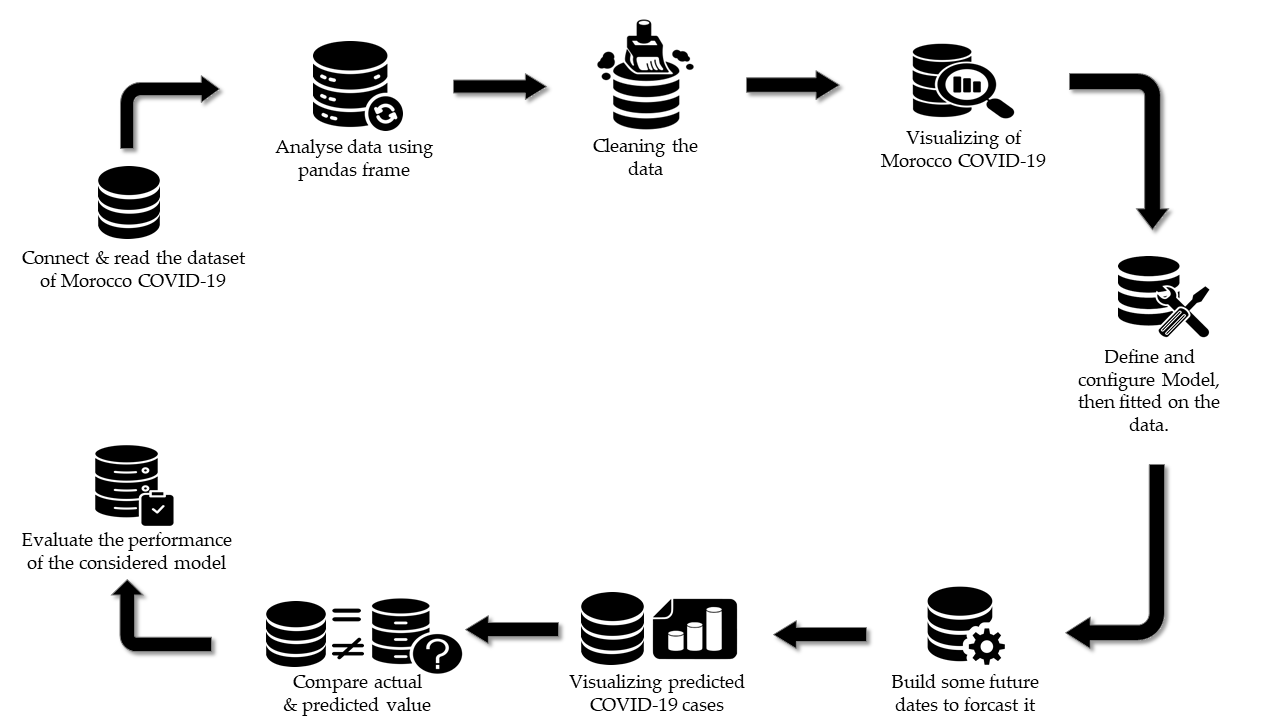Forecasting of the epidemiological situation: Case of COVID-19 in Morocco
Keywords:
ARIMA, COVID-19, Pandemic, FBProphet, Time series forecastingAbstract
Since the coronavirus pandemic started, many people have died due to the disease. The epidemic has been challenging to predict, as it progresses and spreads throughout the world. We used Auto-Regressive Integrated Moving Average (ARIMA) models to predict the outbreak of COVID-19 in the upcoming months in Morocco. In this work, we measured the effective reproduction number using the real data and the forecasted data produced by the two commonly used approaches, to reveal how effective the measures taken by the Moroccan government have been in controlling the COVID-19 outbreak. The prediction results for the next few months show a strong evolution in the number of confirmed and death cases in Morocco. We study the spread of COVID-19 in Morocco to see how many cases are discovered, recovered, and dead, and the forecasting of further cases is used as a basic novel method. It is based on time series models. We used coronavirus outbreak data from March 02, 2020, to August 04, 2021. ARIMA (Autoregressive integrated moving average) and Prophet time-series models are used to forecast the development of COVID-19, which is not a novel method. The mean absolute error, root mean square error, and coefficient of determination R2 were computed to assess the model's performance. Our study aims to provide a better understanding of the infectious disease outbreak that affected Morocco. It also provides information on the disease outbreak's epidemiology. Our study shows that the FBProphet model is more accurate in predicting the prevalence of COVID-19. It can help guide the government's efforts to prevent the virus' spread.

Published
How to Cite
Issue
Section
Copyright (c) 2022 El Mehdi Chouit, Mohamed RACHDI, Mostapha BELLAFKIH, Brahim RAOUYANE

This work is licensed under a Creative Commons Attribution 4.0 International License.





